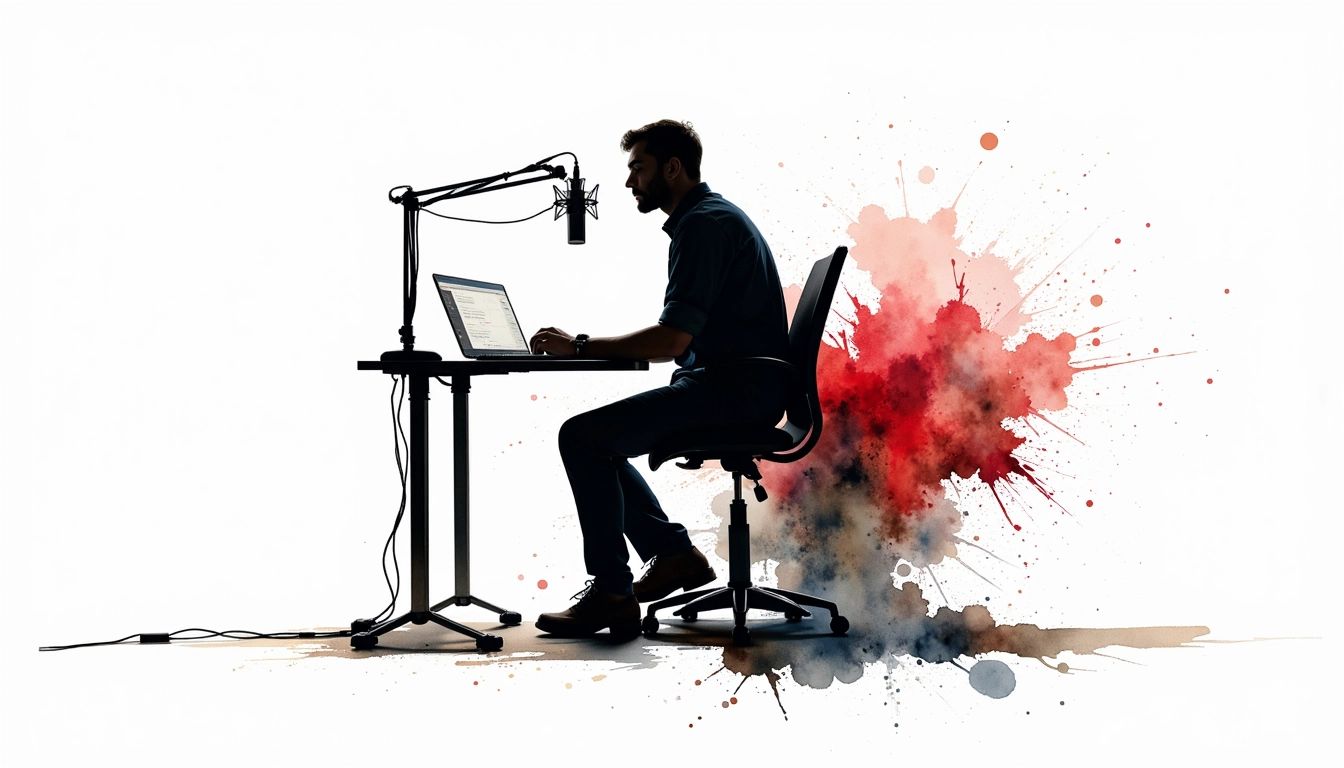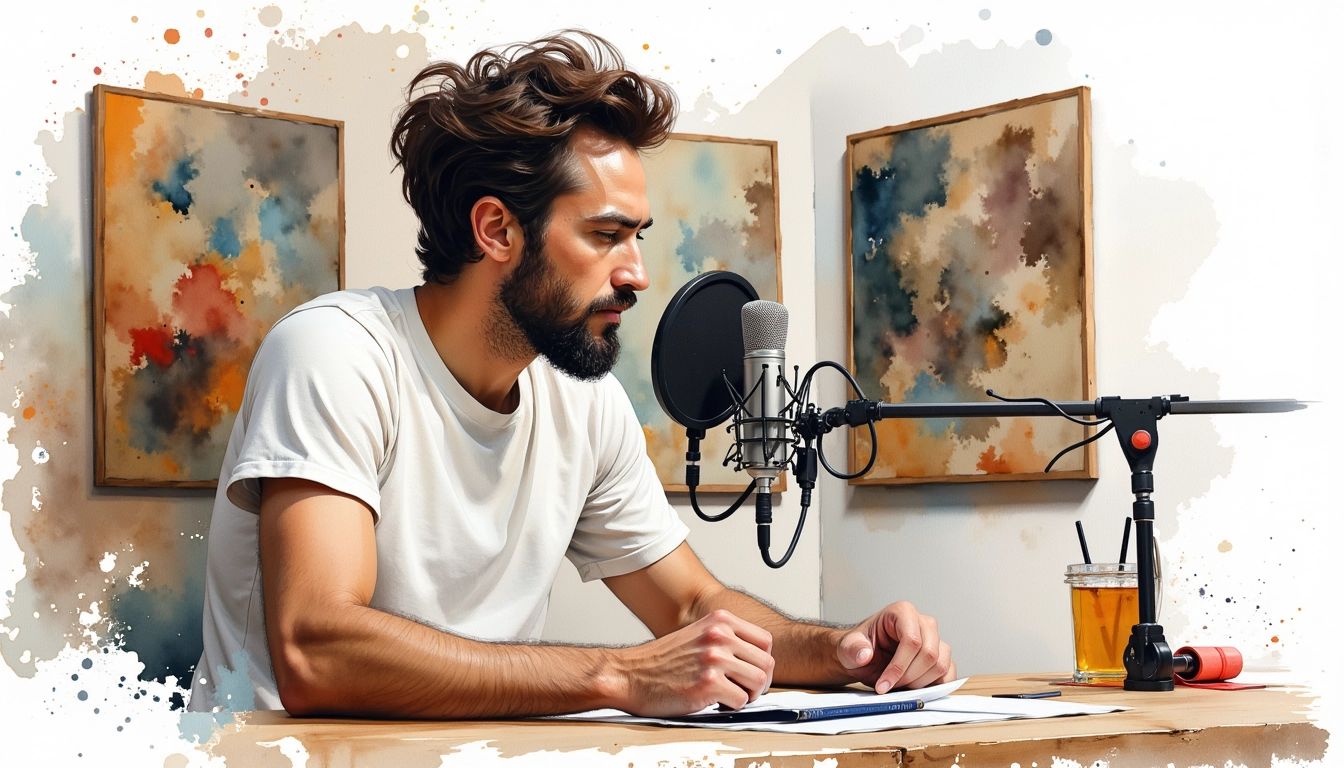Introduction
Ever wondered about creating faceless YouTube videos? You're in the right spot! Faceless videos are gaining popularity on YouTube, and there's a good reason. They offer a way to share knowledge, tell stories, or build a brand without being on camera. This opens doors for creators who are camera-shy, value anonymity, or want to prioritize content. 
Think about it: no more concerns about lighting, makeup, or on-screen presence. You can be creative and connect with your audience while maintaining privacy. It’s an attractive format for both creators and viewers.
Why the Rise of Faceless Videos?
The growing popularity of faceless YouTube videos isn't a short-lived fad; it reflects how we consume online content. People are drawn to easily digestible, engaging content. Faceless videos, with their visuals, animations, and narration, fit this perfectly. Plus, new tools make creating these videos easier than ever.
Who Can Benefit from Faceless Videos?
Faceless videos are adaptable. They're ideal for various niches, from educational channels and product reviews to motivational content and travel vlogs. Educators can explain complex topics, businesses can showcase products, and storytellers can share narratives without being the focus. The options are vast.
Imagine a captivating history video with great visuals and voiceover, or a successful cooking channel centered solely on food and instructions. These are examples of how faceless YouTube videos are changing the game. So, if the camera has held you back from starting a YouTube channel, now is the time to rethink. The world of faceless videos awaits.
Required Equipment
Ready to explore faceless YouTube videos? Great! Let's discuss equipment. You don't need a professional studio, but a few items will significantly improve your production quality. 
Audio Equipment: The Unsung Hero
While faceless, your videos won't be silent! High-quality audio is crucial for engagement. Crackly audio or background noise can quickly deter viewers.
- Microphone: A good microphone is a valuable investment. A mid-range USB microphone will be a substantial upgrade over your computer's built-in microphone. Look for noise-cancelling features.
- Headphones: Good headphones let you monitor audio and catch unwanted noises or distortions. Closed-back headphones are ideal for preventing sound leakage.
Software: Your Digital Toolkit
Software is essential for creating faceless videos. Here's what you need:
- Video Editing Software: User-friendly video editing software is key for assembling visuals, adding audio, and finalizing your product. Options range from free programs like DaVinci Resolve and Kdenlive to paid software like Adobe Premiere Pro. Choose a program that fits your needs. Many YouTubers use professional editing software like CapCut for high-quality faceless videos.
- Screen Recording Software: For creating faceless YouTube videos, screen recording software is vital. OBS Studio (free) and Camtasia (paid) are popular choices for recording screen activity, from presentations and tutorials to gameplay.
Visual Assets: Bringing Your Story to Life
Faceless videos depend on compelling visuals. Here's how to improve yours:
- Stock Footage & Images: Pexels, Unsplash, and Pixabay offer free stock footage and images. Check licensing agreements before use.
- Animation Software (Optional): Animation software can add a dynamic touch. Simple animations can be created with free tools like Blender, while more complex animations can be made with paid software like Adobe After Effects.
Putting it All Together
Don't feel overwhelmed! Start with basic equipment and upgrade as your channel develops. A simple setup with a decent microphone, free editing software, and stock footage can produce professional results. Prioritize high-quality content. The equipment helps bring your vision to life. With the rising popularity of faceless videos, now is a great time to start your YouTube journey.
Planning Your Content
With your equipment ready, it's time to plan your content. This is where the real work begins! A good plan is the foundation of any successful YouTube channel, particularly for faceless videos. Without your personality on screen, your content must be strong.
Brainstorming Ideas
Before scripting, you need a solid idea. What unique perspective do you offer? What valuable knowledge can you share? Explore different niches. Faceless videos work well for educational content, tutorials, product reviews, top 10 lists, and storytelling. Consider channels like "Weird History" or "Epic History." They've built communities by focusing on engaging narratives.
Keyword Research: Understanding Your Audience
Knowing your audience is essential. What are they searching for on YouTube? Keyword research tools like TubeBuddy or VidIQ can help you identify popular terms. For example, if you're creating a cooking channel, research keywords like "easy weeknight dinners," "vegan recipes," or "how to bake a cake." This informs content creation and helps your videos reach the right people.
Scripting: Crafting a Compelling Narrative
With your topic and keywords, it's time to write your script. This is where your video comes alive. Even without your face, your voice and storytelling are central. Write conversationally, as if talking to a friend. Use a hook to grab attention. Keep sentences short and engaging. A clear script keeps viewers hooked, especially in a faceless format. A good script can make any topic engaging and understandable.
Creating a Storyboard (Optional but Recommended)
A storyboard visually represents your video. It outlines the content flow. While optional, it can be helpful, especially for faceless videos. It helps you visualize your video, ensuring a smooth final product. It’s particularly useful for planning transitions, incorporating visuals, and maintaining pace. It can also streamline editing.
By focusing on brainstorming, keyword research, scripting, and storyboarding, you'll create a solid base for compelling faceless YouTube videos. Content is key, especially for faceless YouTube.
Recording Process

With your content planned and equipment ready, it's time to record. This stage is where your ideas become the elements of your faceless videos. Focus on capturing high-quality audio and visuals. You're creating an experience for your viewers.
Recording Your Audio Narration
Your voice is your on-screen presence in faceless videos. Clear audio is essential. Here's how to make it shine:
- Find a Quiet Space: Background noise is problematic. Find a quiet room. A closet, a room with thick curtains, or recording under a blanket can help.
- Practice Your Script: Don’t just read it. Practice for a smooth delivery. You want your narration to sound natural. Imagine talking to a friend.
- Record in Short Takes: Smaller chunks make editing easier. If you stumble, re-record that section.
- Monitor Your Audio: Use headphones to listen while recording. This helps you catch any issues. It's easier to fix problems during recording.
Capturing Your Visuals: Screen Recordings and Beyond
Now for visuals. Since faceless YouTube videos rely on visuals other than your face, you have creative freedom.
- Screen Recordings for Tutorials and Demonstrations: For tutorials, guides, or reviews, use screen recording software like OBS Studio or Camtasia. Ensure your screen is clean before recording. Close unnecessary windows.
- B-Roll Footage and Stock Videos: Platforms like Pexels and Unsplash offer high-quality visuals. Use B-roll footage to illustrate points and create a more dynamic experience. For example, if narrating a historical event, use footage of relevant locations or reenactments.
- Creating Animations and Graphics: If you have design skills, create custom animations or graphics. Simple animations can enhance your content.
- Image Selection: Choose high-resolution images relevant to your topic. Ensure they add value to your narrative.
Bringing Audio and Visuals Together
Your audio and visuals need to work together. Imagine a cooking channel. High-quality visuals of cooking combined with clear audio instructions will engage your audience. This synergy is key for compelling faceless content.
By focusing on these recording techniques, you'll capture what you need for professional faceless YouTube videos. Quality audio and engaging visuals are essential. Take your time, practice, and experiment.
Editing Techniques

You’ve recorded your footage and audio. Now comes the fun part: editing! This is where you polish your content. You don't need to be a pro. With practice and the right approach, you can create great faceless videos.
Choosing the Right Software
First, you need video editing software. Options range from free programs like DaVinci Resolve to paid options like Adobe Premiere Pro. Pick one that suits you. A simple program is sufficient to start. Many creators find software like CapCut adequate for high-quality faceless YouTube videos.
Basic Editing Techniques: Cuts, Transitions, and Audio Mixing
Once you’ve chosen your software, learn the basics:
- Clean Cuts: Keep your cuts precise. Remove dead air or unnecessary pauses. This keeps your video flowing smoothly. If it doesn't add value, cut it!
- Seamless Transitions: Transitions connect scenes. Simplicity is often best. Use basic transitions like fades or cross dissolves for a polished look. Avoid overly complicated transitions.
- Audio Mixing: Good audio is important. Adjust the levels of your narration, background music, and sound effects for a balanced soundscape. Your narration should be clear, and music should complement the visuals.
Enhancing Your Visuals: Color Correction and Text Overlays
Now for some polish. These techniques improve the look of your videos:
- Color Correction: Simple color correction can make a big difference. Adjust brightness, contrast, and saturation for a consistent look. This makes your visuals stand out.
- Text Overlays: Text overlays emphasize key points or add context. Use them strategically. Too much text can be overwhelming. Keep it concise.
- B-roll Footage: Incorporate B-roll footage to illustrate your points and keep viewers engaged. For example, if discussing coffee, show footage of coffee beans being harvested.
Pacing and Flow: Keeping Viewers Engaged
Think of your video as a story. It needs structure. Here’s how to create a compelling narrative:
- Hook Your Audience: Grab attention in the first few seconds. Start with a compelling question, statistic, or visual.
- Maintain a Consistent Pace: Keep your video moving at a good pace. Vary the visuals, use dynamic transitions, and avoid long, static content.
- Call to Action: Encourage viewers to like, comment, subscribe, or visit your website. This builds your audience.
Editing improves with practice. Experiment, find what works for you, and don't be afraid to make mistakes. Check out our guide on Video is a language for more insights. As you refine your skills, you’ll be creating captivating faceless videos. Have fun and be creative.
Optimization Tips

You've created great faceless YouTube videos. Now, how do you get them seen? Optimization is key. Think of it as helping your videos rank higher in YouTube search and attract viewers. It's crucial for faceless YouTube video success.
Keyword Research and Implementation
Use your keywords in your video title, description, and tags. For example, a video about coffee history might use keywords like "history of coffee," "coffee origins," or "how coffee changed the world." Don't overuse keywords. Use them naturally.
Compelling Titles and Thumbnails
Your title and thumbnail are the first things viewers see. Create a title that's informative and intriguing. It should clearly explain your video's content while also grabbing attention. Consider using numbers, questions, or strong adjectives. Your thumbnail should be visually appealing and relevant. A good thumbnail increases click-through rates.
Engaging Descriptions and Tags
Your description provides more detail about your content. Use it to summarize your video, highlight key points, and include keywords. Add tags! Tags help YouTube categorize your video. Use a mix of broad and specific tags. For a video about coffee history, use broad tags like "history" and "food," and specific tags like "coffee beans."
Building a Community
YouTube is a community. Engage with viewers by responding to comments, asking questions, and encouraging discussion. Building a community increases viewer loyalty. Interacting with viewers gives you valuable feedback.
Promoting Your Videos
Share your videos! Promote them on social media, embed them on your website, and connect with relevant communities or influencers. More visibility leads to more views and subscribers.
Optimizing your videos is ongoing. Stay updated on YouTube trends, experiment with different techniques, and try new things. With effort and strategy, you can maximize your video's reach and build a successful channel. Focus on creating quality content that resonates with your audience.
Conclusion
Here’s a complete guide on creating faceless YouTube videos. We’ve covered everything from equipment and planning to recording, editing, and optimization. Creating faceless videos opens a world of possibilities, allowing you to share knowledge, tell stories, and build a community without being on camera.
Final Tips For Success
-
Consistency is key: Regular uploads keep your audience engaged. Building a YouTube channel takes time. Don't get discouraged. Keep creating, learning, and improving.
-
Experiment and find your style: Try different formats, styles, and editing techniques. Discover what works for you and your audience.
-
Engage with your community: Respond to comments, answer questions, and build a community. This fosters loyalty and encourages sharing.
The world of faceless YouTube videos is ever-changing, so embrace learning and have fun! Ready to improve your video creation? Check out Aeon, a video creation platform for publishers. Aeon uses AI to streamline video production. Learn more at https://www.project-aeon.com.